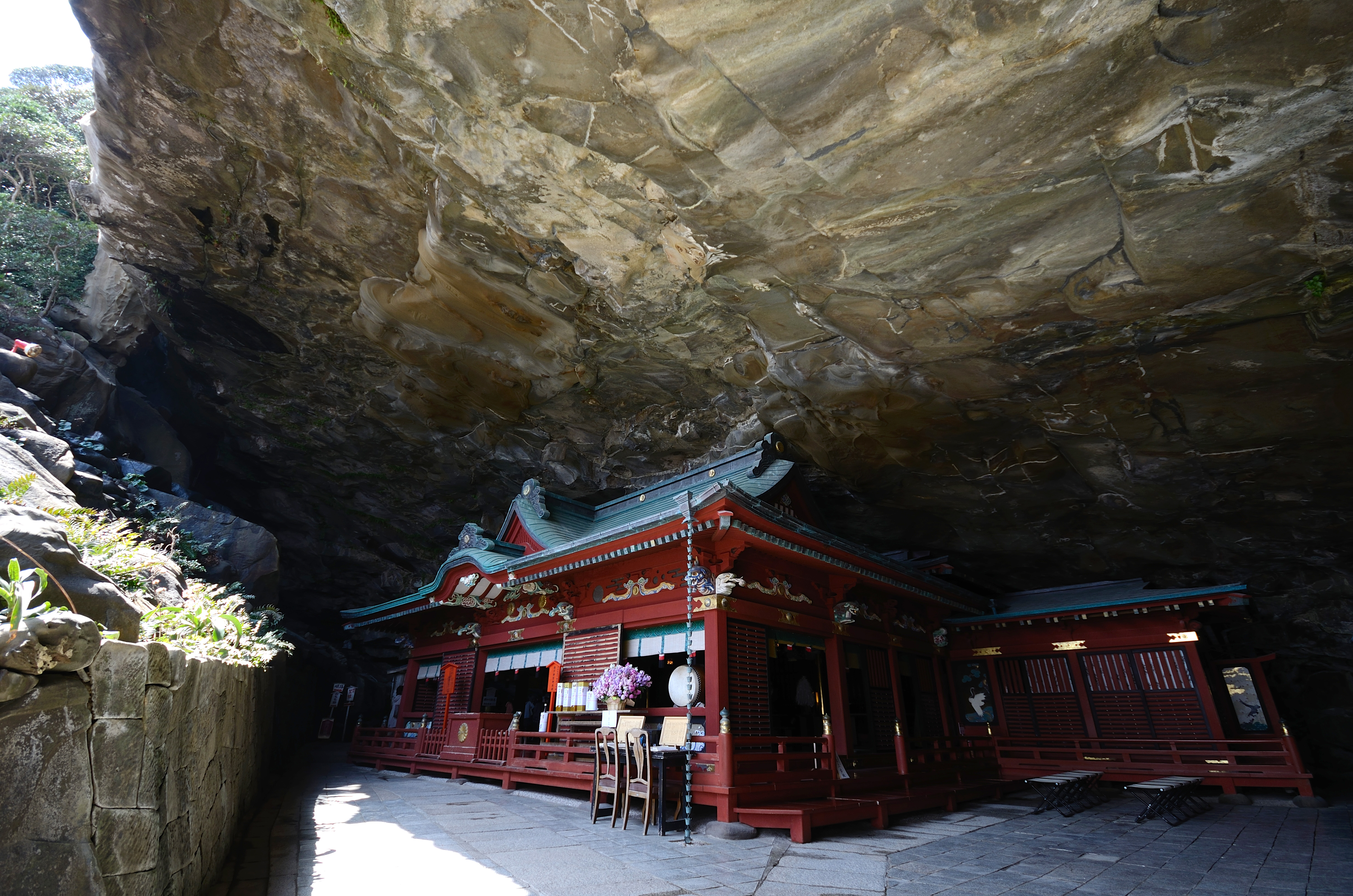Tales of Heterogeneous Marriage Being Incorporated into Imperial Genealogy, from Deities to Emperors
Exploring the Kojiki
Updated on Jan 17 2019
Japan’s oldest book, the Kojiki. It dramatically illustrates the history of Japan from the beginning of the world, the appearance of the deities, to the Imperial succession. Behind each impressive episode, there exist numerous “mysteries” that are yet to be solved even today. By exploring each, we will think about the origin of Japanese beliefs and culture.

Udo Jingū, located on the Nichinan Coast south of Miyazaki City, is dedicated to Yamasachibiko.
Tale of a journey to another country as a tale of development
Hoori, also known as “Yamasachibiko,” lost his brother’s fishhook and decided to visit the realm of the sea deity to find it. There, Hoori ends up marrying Toyotama-hime, the daughter of the sea deity, and then returns to the earthly realm upon receiving a set of magic ball from the sea god, who became his father-in-law. Hoori was then attacked by his brother, but Hoori was able to get him under control.
The way the story develops, from traveling to another realm, marrying the daughter of the ruling deity, obtaining magical items from the realm of the sea, then returning to the home realm and defeating his brother, is the same as the myth of Oonamuchi’s journey to Nenokatasukuni, in which he defeats the eighty gods (his brothers).
In the end, Hoori comes to inherit the lineage of the heavenly deities, and his grandchild becomes the first emperor, Jinmu. Numerous tales of journeys to other lands written from ancient times to the present seem to have significance as tales of development.
Is the myth of Yomi-no-kuni also a story of development?
Then what about the story of Izanagi traveling to Yomi-no-kuni (the land of the dead)? Izanagi went to visit his wife, Izanami, after her death, but upon seeing her terrible appearance, he runs back home, so it cannot be said that the journey was successful.
However, Izanagi, after his return home, fathers Amaterasu, Tsukuyomi, and Susanoo, known as the “three precious children.” Izanagi also gains more power, as is seen in the shift from him being referred to as “mikoto” to becoming “oogami” or “oomikami.” Therefore, this tale indeed seems to have significance as a story of development.
The fate of a heterogeneous marriage
What happened to the married couple of Hoori and Toyotama-hime? Toyotama-hime, who became pregnant, came to the earthly realm, the home of Hoori, from the realm of the sea, in order to give birth.
She told Hoori not to look at her when she went into labor, as she would turn back into her original form when giving birth. Hoori, told not to look, became so curious that he breaks the promise and takes a peek. He sees his wife giving birth in the form of a giant shark. Toyotama-hime, ashamed of being seen, returns to the realm of the sea, leaving behind the newborn child, saying that she cannot stay with Hoori any longer.
Heterogeneous marriage makes it possible to incorporate special powers into the bloodline; however, perhaps bound by the somewhat fixed development of such stories, scenes of separation must also be depicted as well.
-Kokugakuin University has been selected “as a place for the promotion of the study of the Kojiki” by the private university branding project of the Ministry of Education in 2016.-

published in The Japan News on 7/1/2019
Masahiro TANIGUCHI
Research
Japanese literature of ancient times (Kojiki, Nihon-shoki, topography)
Papers
“The Old Man Says” in izumono-kuni-fudoki(2017/05/10)
Tatenui County and Mount Kannabi in Izumonokuni-fudo-ki : Reading What the Genius Says(Reading)(2009//)

